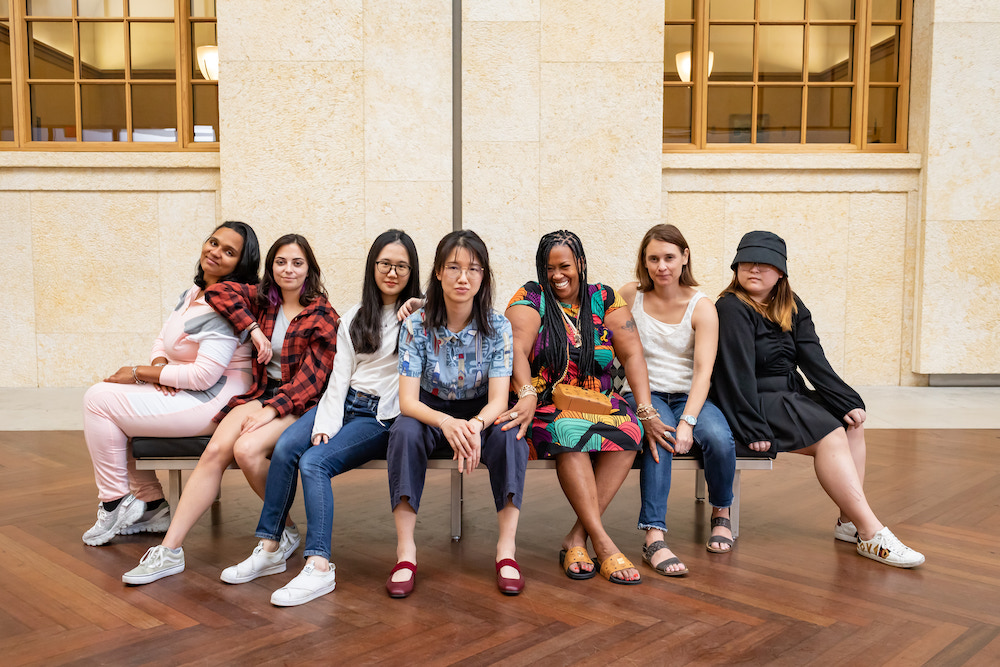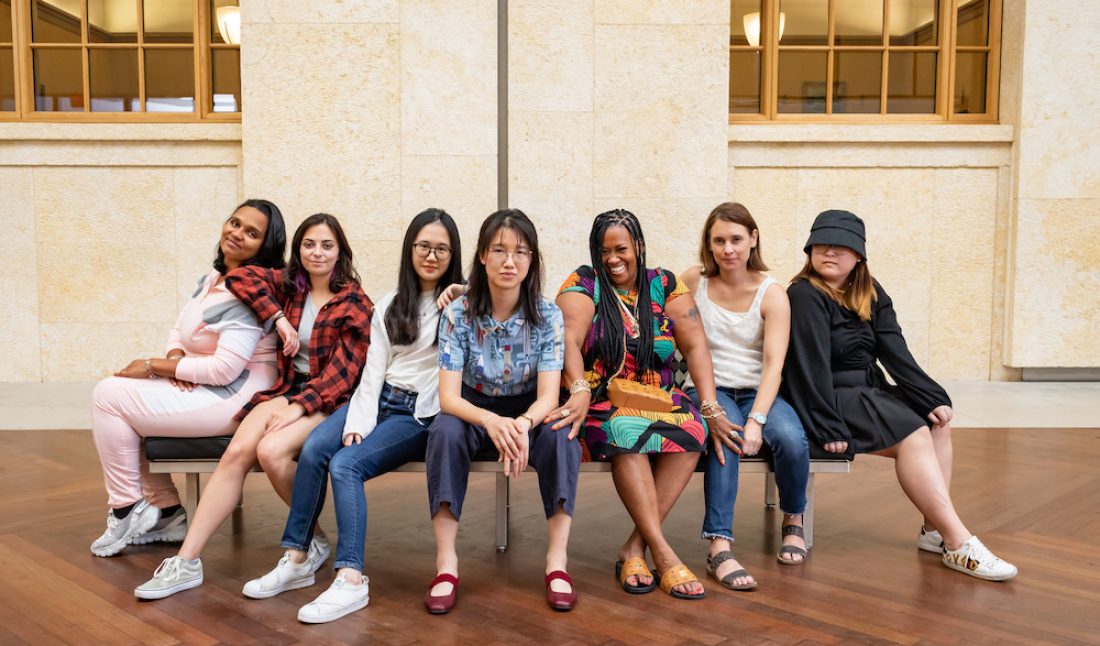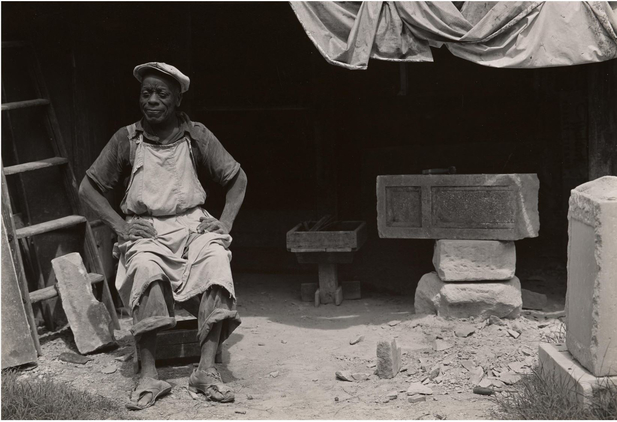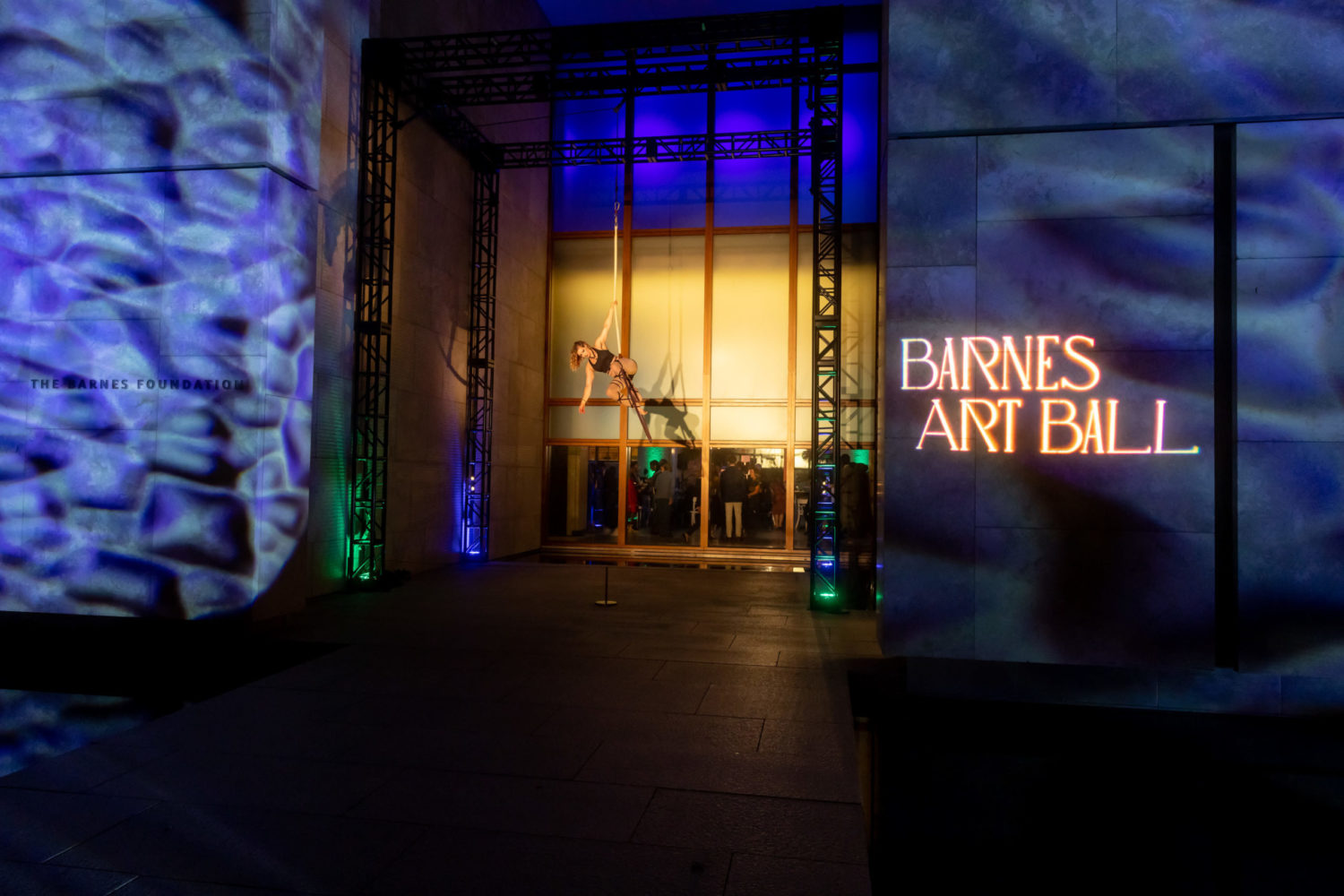Last month in Philadelphia, the Barnes Foundation hosted “Artist Bash: Vagina Chorus,” featuring a performance by artist Althea Rao. Presented in partnership with Women’s Way, the evening saw the world premiere of Rao’s latest performance that addresses reproductive justice. With reproductive rights under ongoing threat in the U.S., the timing felt incredibly poignant and urgent.
With “Vagina Chorus,” multi-disciplinary artist Rao asks if your vagina could speak, what would it say? The performance on November 12 was the result of several Philadelphia-based women coming together in a safe space to reclaim the stories told about their bodies, their health, their desires.
Whitewall caught up with Rao to learn more about the project as well as its dialogue with “Suzanne Valadon: Model, Painter Rebel,” on view through January 9 at the Barnes Foundation.
WHITEWALL: What was the starting point for “Vagina Chorus”? What was the initial idea?
ALTHEA RAO: It was in early 2019 that I discovered a type of commercially available FemTech product—smartphone-connected personal kegel trainer. As someone who likes to work with wearable devices, I started to think it might be interesting to visually or acoustically represent pelvic movements through creative adaptation of this device. I have sung in multiple choirs growing up and always liked that purifying and communal experience hearing my voice in a harmony of voices, so it came to mind that perhaps I could use these devices to create a vagina chorus that brings participants joy and empowerment, especially knowing that there tends to be a lot of stigma and shame associated with the word and the organ vagina.
WW: Why is it important for this to be a collective project, a true chorus of perspectives?
AR: People who menstruate and people who have vaginas don’t get to discuss menstruation and vaginas out loud very often. We all to some level disagree with patriarchy and struggle to say no to common social constructs. This idea of disagreeing or challenging common enemies helps people to form a superficial level of connection very quickly. There tends to always be a very strong sense of sisterhood or community at occasions such as Women’s March, Period Party or in this case, “Vagina Chorus.”
However, topics related to gender justice intersect with many aspects of our lives. When we take a holistic view of the experience of people with vaginas, we see injustices and oppressions play out in dramatically different ways — in education, in economic stability, in access to healthcare, in product design, professional training and even generally opportunities to prosper—people’s struggles differ. It is not enough to just assume that people with vaginas will bond and share empathy over common experiences. In our group, as we continue to meet each week, we have seen misunderstandings, tensions and hostilities build up among group members. Personally, I welcome these hiccups—once they become visible, we became aware of the problems we need to resolve, and through resolving we were able to learn so much more about each other’s experience on a deeper level, and help everyone find their own validations.
Many group members had the desire of wanting to be seen. But in order to be seen, it’s more important to work on seeing and validating oneself in their own unique way. Disagreeing with a common oppressor is only the beginning of changing social norms. In “Vagina Chorus,” each person came up with their own visions of establishing something new and better. This cannot and should not be prescribed.
WW: How do you hope “Vagina Chorus” will help to free womxn of the shame and secrecy around our bodies? How can art and music help womxn reconnect and reflect on their own relationship with their vaginas and womxnhood?
AR: The vagina is a muscular canal that leads from the uterus to the external orifice of the genital area, similar to the way the throat connects the stomach to the mouth. Unlike throat, the word vagina often feels uncomfortable to pronounce, both to those who have vaginas and those who do not.
The vagina has been a source of sacredness and taboo for centuries in many cultures. People avoided researching this part of our body, but instead developed many speculative theories using the male body form as the standard to compare to. For example, doctors believed that the vagina was the penis being pushed inwardly into a human’s body. Even the word “vagina” originally meant “sheath” before the 17th century when it was first borrowed to refer to the body part. When vaginas are not penis dependent, we think of them in relation to the new lives being born through them, out of the mother’s body. Aside from understanding the vagina in relation to intercourse and childbirth, we’ve been socialized to know very little about this part of our body and tend to avoid caring or interacting with them the same way we care or interact with our nose, tummy or hair.
In “Vagina Chorus,” I chose the vagina as a portal through which we examine historical, political, cultural and social factors that have led to the way one feels about one’s body and gendered identity. Rarely do women get asked: what does the vagina mean to a woman herself, if not the values that have been reinforced upon us under a highly politicized and male dominated framework? When women do get the space to think about this question, initially many will struggle to find answers. The women who I am currently working with shared that their entire pelvic area felt like a void of meaning or unknown territory when children and penises were out of the picture. Few knew how to engage or isolate their pelvic muscles to perform a good Kegel squeeze, or anatomically where these muscles are, what they look like.
Can play, music and other forms of creative activities fill in this void and help ground us in ourselves better? In Vagina Chorus, I invite the performers to feel/exercise their pelvic floor muscles daily and work with me once a week to make music with their vaginas. Through the healing power of community music making and physical therapy, the performers gain agency and confidence, and identify destinations of peace to arrive at where they can be in touch with and in tune with themselves.
WW: How do you see Vagina Chorus continuing?
AR: During the performance I asked the four Philadelphia women: How do you define our work together up to this point, and how do you see your personal journey continue beyond this point? Each of them has given brilliant answers and can be seen here.
For me personally, I hope to continue doing similar types of long-term community engagement in other communities. I am in conversation with Alabama Contemporary Art Center in Mobile, AL about doing an iteration of Vagina Chorus there. I am also heading into a Doctoral program in Seattle where I will continue to develop this project.
WW: With the performance at the Barnes, what connection do you see to the Suzanne Valadon show and body of work on view?
Valadon was a pioneer in her times. From a model to a painter, she found her own way of gazing back and being seen, and till today we continue to live in the spaces she had established for women artists. Vagina Chorus occupies and governs this space, and we continue to expand on it and invite more people to join us and take ownership.
 Althea Rao’s “Vagina Chorus,” courtesy of the artist and the Barnes Foundation.
Althea Rao’s “Vagina Chorus,” courtesy of the artist and the Barnes Foundation.











